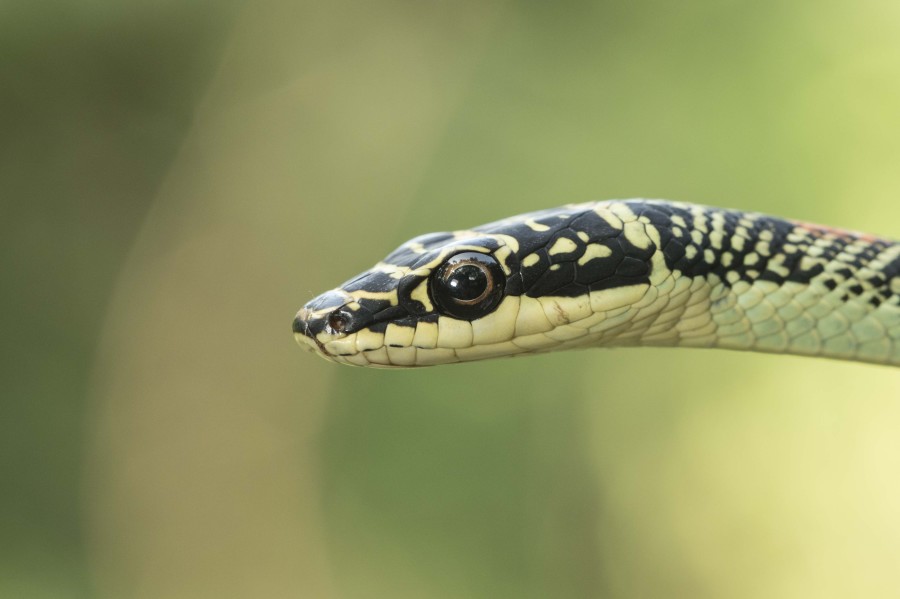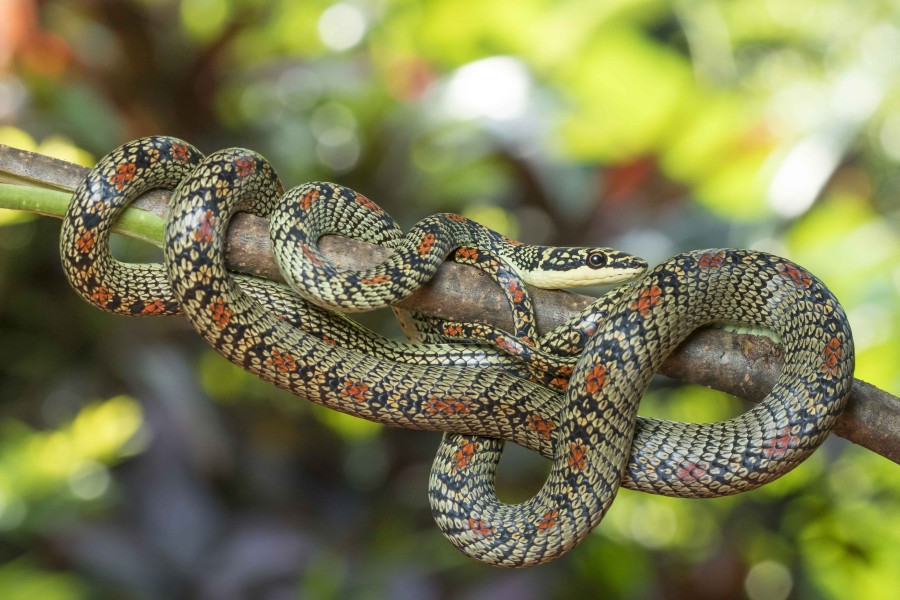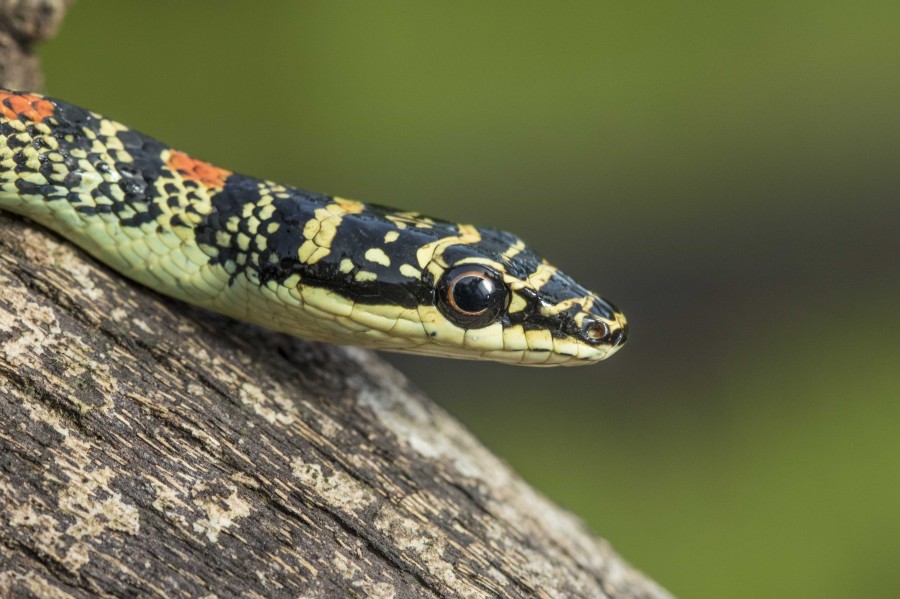Chrysopelea ornata
Maximum length: 5.5 feet
Can a snake really fly? Of course not. True powered flight is only achieved by animals with wings like insects, birds, and bats. The flying snake, like flying frogs, flying lemurs, and flying squirrels, is a glider. The flying squirrel glides by stretching a fold of skin called a patagium connecting from its wrist to its ankle. Flying frogs glide on membranes stretched in between long toes.
The flying snake however has no such membrane or patagium to glide on. Instead it achieves a parachute like effect by extending its ribs, and pulling in its underside. A cross section of the snake taken at this time would be very similar to the cross section of a frisbee. This trick coupled with the snake also vigorously ‘swimming in the air’ gives it enough lift and buoyancy to glide up to a hundred meters!
It must be remembered however that the snake must trade altitude for distance while gliding: essentially the greater the difference between ‘take-off’ and ‘landing’ points the longer the distance covered on the glide! So like all experienced and educated gliders the flying snake will generally climb high up into a tree before it launches itself into the air.
Flying snakes are rare animals and in the twenty odd years I’ve been handling snakes I’ve never once come across one. But of course it doesn’t help that I don’t live in flying snake territory! But a friend of mine Deepak does. He works at the Cotigao wildlife sanctuary and often rescues snakes from human habitations around there. In the last two months I’ve had the good fortune to closely observe three flying snakes thanks to him!
Before I’d first seen a flying snake I could only guess at its behavior. I had no idea how this stunning and mysterious creature would react on being handled. I was surprised to learn that the flying snake shares almost the exact same temperament, movement patterns, and body structure as the common bronze back tree snake. In fact the only obvious difference between the two snakes is in the way they are colored. My first thought on handling the flying snake therefore was wondering why the bronze back tree snake did not also glide!
My second thought was that of astonishment at the speed and sure -footedness (pardon the pun!) with which the flying snake scaled vertical branches with seemingly no purchase while I tried to photograph it. I learnt later that flying snakes have strongly keeled belly scales and it isn’t uncommon to see them climbing vertical trunks of thick trees with a gravity-mocking confidence.
Flying snakes are diurnal animals and move around mostly in the trees. They are fairly catholic in their diet and feed on a range of animals including frogs, geckoes, lizards, small birds, bats and even other snakes! Like vine snakes and cat snakes, flying snakes are back fanged. These enlarged rear teeth of the snake assist its mildly venomous saliva in entering its prey and subduing it.
Very little is known about the flying snake’s breeding habits except that it is oviparous and lays six to twelve elongate eggs.



